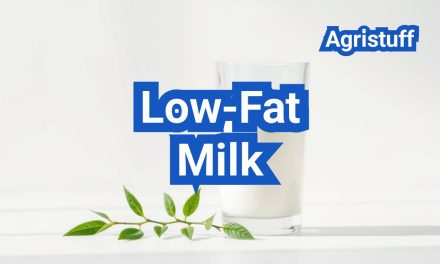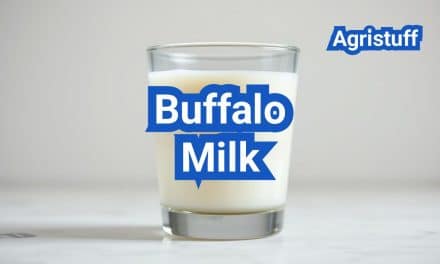A staple in many cuisines, particularly in the United States, processed cheese is known for its melting properties.
The uniqueness of this cheese lies in its meltability, making it a favorite for burgers and sandwiches.
Its history and manufacturing process are fascinating, and understanding how it’s made can enhance its use in various dishes.
Key Takeaways
- The manufacturing process of processed cheese involves blending natural cheese with other ingredients.
- Meltability is a key characteristic that makes it ideal for grilled cheese sandwiches.
- Processed cheese is a versatile ingredient used in many cuisines.
- Understanding its history can provide insights into its uses.
- It’s a staple in American fast food, particularly in burgers.
What Is American Cheese?
As a processed cheese product, American cheese has a unique composition that sets it apart from other types of cheese. It is known for its meltability and is often used in fast food and grilled cheese sandwiches.
Definition and History
American cheese is defined as a pasteurized process cheese made from a blend of natural cheese, milk, and other ingredients. Its history dates back to the early 20th century when it was first developed as a more durable and meltable alternative to traditional cheeses.
The original American cheese was created by melting natural cheese together with other ingredients like milk and salt, then cooling and shaping it into a block or slice form. This process allowed for a uniform taste and texture that was appealing to a wide audience.
Types of American Cheese
There are several types of American cheese available, including:
- Individual wrapped slices
- Blocks of American cheese for grating or slicing at home
- Low-fat or reduced-sodium versions
Each type caters to different consumer needs, whether it’s convenience, health-consciousness, or culinary versatility.
| Type of American Cheese | Description | Common Use |
|---|---|---|
| Individual Wrapped Slices | Pre-sliced and wrapped for convenience | Sandwiches, burgers |
| Blocks of American Cheese | Available for grating or slicing | Cooking, grating over dishes |
| Low-fat or Reduced-sodium | Healthier alternatives with less fat or sodium | Health-conscious consumers |
Is American Cheese “Real Cheese”?
The debate over whether American cheese is “real cheese” hinges on its processed nature. While it is made from natural cheese, the addition of other ingredients and the processing it undergoes sets it apart from traditional cheeses.
Proponents argue that American cheese is a valuable innovation, offering convenience and consistency. Critics, however, view it as an unnatural product that lacks the nutritional value and taste of genuine cheese.
American Cheese Ingredients
Understanding the ingredients in American cheese is crucial to appreciating its unique characteristics and uses in cooking. American cheese is a processed cheese product made from a blend of natural cheese, milk, and other dairy components, along with various additives.
Common Ingredients in Commercial Products
Commercial American cheese products typically contain a mix of:
- Milk and milk derivatives
- Whey and whey proteins
- Milk fat
- Emulsifying salts (such as sodium citrate and sodium phosphate)
- Colorings (like annatto)
- Preservatives
These ingredients work together to give American cheese its signature meltability and taste. Emulsifying salts, for instance, play a crucial role in achieving a smooth, even melt.
Emulsifying Salts and Their Purpose
Emulsifying salts are additives used to improve the melting properties of cheese. They help to:
- Stabilize the cheese emulsion, preventing separation
- Enhance meltability and texture
- Improve the overall appearance of the melted cheese
Sodium citrate is a commonly used emulsifying salt in American cheese, contributing to its smooth melting characteristics.
Annatto and Other Colorings
Annatto is a natural coloring derived from plants, used to give American cheese its distinctive yellow or orange hue. Other colorings may also be used, depending on the desired shade and product formulation.
The use of annatto and other colorings not only enhances the appearance of American cheese but also helps to maintain a consistent color profile across different batches and products.
How American Cheese Is Made

American cheese is manufactured through a process that melts natural cheese and re-forms it into a distinct product. This process involves blending various natural cheeses with other ingredients to achieve the desired taste, texture, and melting properties.
The Manufacturing Process
The manufacturing process of American cheese begins with selecting a blend of natural cheeses, such as cheddar, colby, or monterey jack. These cheeses are then melted together with emulsifying salts, such as sodium citrate, to create a uniform mixture. The mixture is heated to a high temperature to ensure that the cheese is fully melted and the ingredients are well combined.
Key Steps in the Manufacturing Process:
- Selection of natural cheeses
- Melting the cheese with emulsifying salts
- Heating the mixture to a high temperature
- Adding colorings or other ingredients as needed
- Pouring the mixture into molds to shape the final product
Pasteurized Process Cheese vs. Cheese Food
It’s essential to differentiate between pasteurized process cheese and cheese food. Pasteurized process cheese is made by melting natural cheese and then re-forming it, often with added emulsifying salts. Cheese food, on the other hand, may contain additional ingredients beyond cheese, such as milk or whey, and is not necessarily made from melted cheese.
| Characteristics | Pasteurized Process Cheese | Cheese Food |
|---|---|---|
| Main Ingredients | Natural cheese, emulsifying salts | Cheese, milk, whey, or other dairy products |
| Manufacturing Process | Melting and re-forming natural cheese | May involve mixing various dairy products |
| Taste and Texture | Uniform, melts smoothly | Can vary, may not melt as smoothly |
Understanding the differences between pasteurized process cheese and cheese food can help consumers make informed choices about the American cheese they purchase.
Nutritional Profile of American Cheese
The nutritional aspects of American cheese, including its calorie, protein, and fat content, are essential for health-conscious consumers to understand.
Calorie Content in American Cheese Slices
American cheese is known for its melting properties and is often used in sandwiches and burgers. A single slice of American cheese typically contains around 50-60 calories, though this can vary depending on the brand and type.
For instance, Kraft Singles, a popular brand, has approximately 50 calories per slice. Understanding the calorie content is crucial for those monitoring their daily intake.
Protein and Fat Content
American cheese contains a mix of protein and fat. On average, a slice of American cheese contains about 2-3 grams of protein and 3-4 grams of fat.
The protein content contributes to its nutritional value, while the fat content, particularly saturated fat, is a consideration for heart health.
Sodium Levels and Health Considerations
One of the significant nutritional concerns with American cheese is its sodium content. A single slice can contain anywhere from 200 to 400 milligrams of sodium.
For individuals with sodium-restricted diets, it’s crucial to be mindful of the sodium levels in American cheese, as excessive sodium consumption can lead to health issues such as hypertension.
| Nutritional Component | Average Value per Slice | % Daily Value* |
|---|---|---|
| Calories | 50-60 | 2-3% |
| Protein | 2-3 grams | 4-6% |
| Fat | 3-4 grams | 5-6% |
| Sodium | 200-400 milligrams | 8-16% |
*Based on a 2,000 calorie diet.
Understanding the nutritional profile of American cheese helps consumers make informed choices about its inclusion in their diet.
Yellow vs. White American Cheese

The difference between yellow and white American cheese lies not just in their appearance, but also in their flavor profiles and uses in cooking. While both types are processed cheese products, the distinction in coloring agents significantly impacts their characteristics.
Flavor Differences
Yellow American cheese tends to have a milder, slightly sweeter flavor compared to its white counterpart. This is largely due to the presence of annatto, a coloring agent that not only gives it a distinctive hue but may also contribute to its flavor profile. On the other hand, white American cheese, often referred to as “queso white American cheese” in some recipes, has a more neutral taste. This neutrality makes it a versatile option for dishes where a subtle cheese flavor is desired.
The flavor difference between the two is subtle but can be significant in certain recipes. For instance, in dishes where a strong cheese flavor is not desired, white American cheese might be preferred. Conversely, yellow American cheese could be chosen for its slightly sweeter and milder taste, which works well in grilled cheese sandwiches or as a melted topping.
Coloring Agents
The primary difference between yellow and white American cheese is the presence or absence of annatto, a natural coloring derived from plants. Annatto is used to give yellow American cheese its characteristic color. White American cheese, lacking this coloring agent, retains a pale, almost translucent appearance.
Annatto not only affects the color but may also subtly influence the flavor. While its primary role is as a coloring agent, annatto can impart a slightly nutty or sweet flavor, enhancing the overall taste experience of yellow American cheese.
Best Uses for Each Type
Choosing between yellow and white American cheese often depends on the desired appearance and flavor of the final dish. Yellow American cheese is a classic choice for grilled cheese sandwiches, burgers, and macaroni and cheese, where its melted, golden appearance is part of the appeal.
White American cheese, with its neutral flavor and pale color, is ideal for dishes where a subtle cheese presence is required. It’s often used in sauces, dips, and certain types of sandwiches where the cheese needs to melt without altering the dish’s color or overpowering its other flavors.
In conclusion, while both yellow and white American cheese share many similarities as processed cheese products, their differences in coloring and flavor make them suited to different culinary applications. Understanding these differences can help cooks and chefs choose the most appropriate type for their recipes, enhancing both the flavor and presentation of their dishes.
American Cheese vs. Other Cheeses
Understanding the differences between American cheese and other cheeses can help in choosing the right cheese for your needs. American cheese is often compared to natural cheeses like cheddar and Swiss due to their popularity in various dishes.
American Cheese vs. Cheddar
American cheese and cheddar cheese have distinct differences in terms of taste, texture, and usage. Cheddar is a natural cheese with a sharper flavor and a more crumbly texture, whereas American cheese is processed, melts smoothly, and has a milder taste.
| Characteristics | American Cheese | Cheddar Cheese |
|---|---|---|
| Taste | Mild, creamy | Sharp, rich |
| Texture | Smooth, melts well | Crumbly, firm |
| Usage | Grilled cheese, burgers | Snacks, grating, sauces |
American Cheese vs. Swiss
Swiss cheese is known for its nutty flavor and hole-y texture, which contrasts with the smooth, melted texture of American cheese. While Swiss cheese is often used in fondue and grilled cheese, American cheese is preferred for its melting properties.
Comparison with Similar Processed Cheeses
American cheese is not the only processed cheese available; other brands and types offer similar characteristics. Comparing these can help in understanding the unique selling points of American cheese.
- Melting Properties: American cheese melts smoothly, making it ideal for grilled cheese sandwiches and burgers.
- Flavor Profile: It has a mild, creamy flavor that complements a variety of dishes.
- Convenience: Pre-sliced and packaged, American cheese is convenient for everyday use.
In conclusion, American cheese has its own set of advantages and disadvantages when compared to other cheeses. Understanding these differences can help in making informed choices for cooking and dining.
The Science Behind American Cheese Meltability

Understanding the science behind American cheese’s meltability reveals the importance of factors like pH levels and emulsifying salts. The meltability of cheese is a complex trait that is influenced by its chemical composition and the way it is processed.
pH Levels and Melting Properties
The pH level of cheese plays a significant role in its melting properties. American cheese is formulated to have a pH level that optimizes its meltability, making it ideal for applications like grilled cheese sandwiches and burgers. A lower pH can lead to a cheese that is more prone to melting, as it affects the structure of the casein proteins and the overall texture of the cheese.
Why American Cheese Melts So Smoothly
American cheese melts smoothly due to its unique blend of ingredients, including emulsifying salts like sodium citrate. These salts help to stabilize the fat and protein components of the cheese, ensuring a uniform melt. The manufacturing process also contributes to its smooth melting characteristic, as it involves heating and blending the cheese to create a homogeneous product.
Sodium Citrate and Other Melting Agents
Sodium citrate is a key melting agent in American cheese, acting to improve its meltability and texture. By adjusting the amount of sodium citrate and other emulsifying salts, manufacturers can fine-tune the melting properties of the cheese to suit various applications. Other melting agents may also be used in conjunction with sodium citrate to achieve the desired melting behavior.
The combination of optimized pH levels, carefully selected ingredients, and a controlled manufacturing process all contribute to the exceptional meltability of American cheese. This makes it a preferred choice for many culinary applications where melted cheese is a key component.
Top American Cheese Brands

Among the numerous American cheese brands available, some have risen to the top due to their exceptional taste and quality. These brands have become staples in many American households, offering a range of products that cater to different tastes and preferences.
Kraft Singles and Kraft Deli Deluxe
Kraft Singles is one of the most recognizable American cheese brands, known for its convenience and meltability. Kraft Deli Deluxe is another popular variant that offers a more premium taste experience. Both products are widely used in sandwiches and burgers.
Boar’s Head American Cheese
Boar’s Head is a brand that is often associated with high-quality deli products. Their American cheese is no exception, offering a rich, creamy flavor that is ideal for sandwiches and burgers. Boar’s Head American cheese is made with high-quality ingredients and is free from artificial preservatives and flavors.
Cooper Sharp and Other Premium Options
Cooper Sharp is another premium American cheese brand that has gained a loyal following. Known for its smooth melting properties and rich flavor, Cooper Sharp is a favorite among cheese enthusiasts. Other premium brands offer unique flavor profiles and textures, catering to a wide range of consumer preferences.
Land O’Lakes and Other Notable Brands
Land O’Lakes is a well-respected brand in the dairy industry, and their American cheese products are no exception. They offer a range of American cheese products, from sliced cheese to cheese blocks, that are known for their quality and taste. Other notable brands in the market include those that specialize in artisanal and gourmet cheeses, offering consumers a diverse range of choices.
In conclusion, the top American cheese brands offer a mix of quality, taste, and convenience that has earned them a loyal customer base. Whether you’re looking for a classic American cheese experience or something more premium, there’s a brand out there to suit your needs.
Making the Perfect Grilled Cheese with American Cheese

To make the ultimate grilled cheese with American cheese, one must consider the type of bread, the cooking technique, and additional flavors. American cheese is renowned for its melting properties, making it an ideal choice for grilled cheese sandwiches.
Bread Selection
The foundation of a great grilled cheese is the bread. Opt for a bread that is sturdy enough to hold the cheese and withstand the grilling process. Popular choices include:
- Sourdough, for its tangy flavor and chewy texture
- Brioche, for its richness and tender crumb
- White bread, for a classic, straightforward taste
- Whole wheat, for a nuttier flavor and denser texture
When selecting bread, consider the balance between the bread’s flavor and the American cheese’s creaminess.
Cooking Techniques
The cooking technique can make or break a grilled cheese sandwich. To achieve perfection:
- Preheat a non-stick skillet or griddle over medium heat.
- Butter one side of each bread slice to promote even browning.
- Place one slice, butter-side down, in the skillet, followed by the cheese and the second slice, butter-side up.
- Cook until the bread is golden brown and the cheese is melted, then flip and cook the other side.
Using a lid can help melt the cheese more efficiently by trapping heat.
Flavor Enhancements and Additions
While American cheese is delicious on its own, adding other ingredients can elevate the grilled cheese experience. Consider:
- Caramelized onions for a sweet, deep flavor
- Sliced meats like ham or turkey for added protein
- Fresh herbs such as thyme or basil for a fresh twist
- Tomato slices for a burst of juicy flavor
Experiment with different combinations to find your perfect grilled cheese.
By focusing on the bread, cooking technique, and additional flavors, you can create a grilled cheese sandwich with American cheese that is both satisfying and delicious.
American Cheese for Burgers

For many burger lovers, American cheese is the perfect complement to their favorite patty. Its melting properties and mild flavor make it an ideal choice for burgers.
Why American Cheese Works Well on Burgers
American cheese is a popular choice for burgers due to its excellent meltability and creamy texture. When heated, it melts smoothly, binding the flavors of the burger together. This characteristic makes it a favorite among chefs and home cooks alike.
The mild flavor of American cheese is another reason it pairs well with burgers. It doesn’t overpower the taste of the meat or other toppings, allowing for a balanced flavor profile.
Smash Burger Cheese Techniques
Smash burgers have gained popularity for their crispy crust and juicy interior. American cheese is often used in smash burgers because it melts quickly and adds a rich, cheesy flavor.
To achieve the perfect smash burger with American cheese, cooks often place the cheese on the patty immediately after smashing it onto the grill. This technique ensures the cheese is melted to perfection, binding with the burger’s crust.
Gourmet Burger Cheese Options
While traditional American cheese is a staple for many burgers, gourmet options are also available. Some premium American cheese brands offer unique flavors and higher-quality ingredients, elevating the burger experience.
Gourmet burger enthusiasts can experiment with different types of American cheese, such as smoked or flavored varieties, to add a new dimension to their burgers.
American Cheese in Classic Sandwiches

From cheesesteaks to breakfast sandwiches, American cheese plays a crucial role in many beloved dishes. Its meltability and mild flavor make it an ideal choice for a variety of classic sandwiches.
Cheesesteak Options
American cheese is a popular choice for cheesesteaks, particularly in Philadelphia-style cheesesteaks. It melts beautifully, coating the steak and adding a rich, creamy texture. Some prefer it over other cheeses due to its mild flavor, which complements the savory taste of the steak.
Patty Melts and Tuna Melts
In addition to cheesesteaks, American cheese is also a staple in patty melts and tuna melts. For patty melts, it pairs perfectly with the beef patty and grilled onions, creating a satisfying and filling meal. In tuna melts, American cheese adds a creamy contrast to the flaky tuna, making for a delicious and easy-to-make sandwich.
Breakfast Sandwiches
American cheese is also a common ingredient in breakfast sandwiches. It melts well when heated, binding the various components together. Whether it’s paired with scrambled eggs, bacon, or sausage, American cheese adds a smooth and rich element to breakfast sandwiches, making them more satisfying.
The versatility of American cheese makes it a favorite among sandwich enthusiasts. Its ability to melt smoothly and add flavor without overpowering other ingredients makes it an ideal choice for a wide range of classic sandwiches.
Creating American Cheese Sauce

Creating a delicious American cheese sauce is easier than you think. With just a few ingredients and some simple steps, you can elevate your dishes from ordinary to extraordinary.
Basic Recipe and Ingredients
To make American cheese sauce, you’ll need American cheese, milk or cream, and a few additional ingredients to enhance the flavor and texture. A basic recipe includes:
- 2 cups American cheese, shredded
- 1/2 cup milk or heavy cream
- 2 tablespoons butter
- 1 teaspoon paprika (optional)
- Salt and pepper to taste
Combine the shredded American cheese and milk in a saucepan over medium heat, stirring constantly until the cheese is melted and the sauce is smooth. Add butter, paprika (if using), salt, and pepper, and stir until fully incorporated.
Uses for American Cheese Sauce
American cheese sauce is incredibly versatile and can be used in a variety of dishes. Some popular uses include:
- Macaroni and Cheese: A classic comfort food dish made by combining cooked macaroni with American cheese sauce.
- Nachos: Drizzle American cheese sauce over tortilla chips for a delicious snack.
- Grilled Cheese Dipping Sauce: Serve American cheese sauce alongside grilled cheese sandwiches for dipping.
- Baked Potatoes: Top baked potatoes with American cheese sauce, bacon bits, and chives.
Troubleshooting Common Issues
If your American cheese sauce doesn’t turn out as expected, don’t worry. Here are some common issues and their solutions:
- Lumpy Sauce: If your sauce is lumpy, it may be due to insufficient stirring or using low-quality cheese. Try stirring more vigorously or using a higher-quality American cheese.
- Too Thick or Too Thin: Adjust the consistency by adding more milk (to thin) or more cheese (to thicken).
- Separation: If the sauce separates, it may be due to overheating. Remove from heat and whisk vigorously to re-emulsify.
By following these tips and using high-quality ingredients, you can create a delicious American cheese sauce to enhance your favorite dishes.
How to Store American Cheese Properly

Proper storage is crucial for maintaining the quality and safety of American cheese. Whether you’re storing sliced American cheese or a block, the right storage methods can extend its shelf life and preserve its flavor and texture.
Storage Methods for Sliced Cheese
For sliced American cheese, it’s best to store it in an airtight container or wrap it tightly in plastic wrap or aluminum foil. This prevents moisture from entering and causing the cheese to become soggy or develop off-flavors. You can also store sliced American cheese in its original packaging if it’s not opened.
Tips for storing sliced cheese:
- Keep it away from strong-smelling foods, as American cheese can absorb odors easily.
- Store it in the refrigerator at a consistent temperature below 40°F (4°C).
- Use it within the recommended timeframe, usually a few weeks after opening.
Freezing American Cheese
Freezing is a viable option for longer-term storage of American cheese. However, it’s essential to note that freezing can affect the texture, making it more crumbly or separated when thawed. To freeze American cheese, wrap it tightly in plastic wrap or aluminum foil and place it in a freezer-safe bag.
Freezing tips:
- Label the bag with the date and contents.
- Store it in the freezer at 0°F (-18°C) or below.
- Use frozen American cheese within 6-8 months for the best quality.
Signs of Spoilage
Even with proper storage, American cheese can spoil if not monitored. Signs of spoilage include visible mold, slimy texture, or an off smell. If you notice any of these signs, it’s best to discard the cheese to avoid foodborne illness.
Regularly checking your stored American cheese can help you catch any issues early. By following these storage tips, you can enjoy your American cheese for a longer period while maintaining its quality and safety.
At The End of: American Cheese
American cheese has been a staple in many cuisines, particularly in the United States, due to its unique characteristics and uses. As discussed, American cheese has a distinct history, manufacturing process, and applications that set it apart from other cheeses.
The summary of American cheese highlights its meltability, nutritional profile, and various types, including yellow and white American cheese. The science behind its meltability and the role of emulsifying salts and other ingredients have been explored, providing insight into its production.
In conclusion, American cheese remains a popular choice for various dishes, from grilled cheese sandwiches to burgers. Its versatility and widespread availability make it a staple in many American households, aligning with the preferences of the American cheese society.
By understanding the characteristics and uses of American cheese, individuals can make informed decisions about incorporating it into their recipes, ultimately enhancing their culinary experiences.
FAQ
What is American cheese, and how is it made?
American cheese is a type of processed cheese product made from a blend of natural cheese, milk, and other ingredients. It’s manufactured through a process that involves pasteurization, emulsification, and shaping into slices or blocks.
Is American cheese considered “real cheese”?
The classification of American cheese as “real cheese” is debated. While it’s made from natural cheese, the processing and addition of other ingredients alter its composition and characteristics, making it distinct from natural cheeses.
What are the main ingredients in commercial American cheese products?
Commercial American cheese products typically contain a blend of natural cheese, milk, whey, milkfat, and various additives like emulsifying salts, coloring agents (such as annatto), and preservatives.
How does the manufacturing process affect the meltability of American cheese?
The manufacturing process, including the use of emulsifying salts and controlled pH levels, contributes to American cheese’s meltability. These factors help to create a smooth, even melt.
What are the nutritional implications of consuming American cheese?
American cheese is a source of protein, fat, and calories. However, it can be high in sodium and saturated fat, making moderation important for a balanced diet.
What’s the difference between yellow and white American cheese?
The primary difference between yellow and white American cheese is the presence of coloring agents like annatto in yellow American cheese. The flavor can also vary slightly, with some preferring the taste of one over the other.
How does American cheese compare to other cheeses like cheddar or Swiss?
American cheese has a milder flavor and a softer, more meltable texture than cheddar or Swiss. It’s designed for melting and is often used in applications where these properties are beneficial.
Why is American cheese a good choice for grilled cheese sandwiches and burgers?
American cheese melts smoothly and evenly, making it ideal for grilled cheese sandwiches and burgers. Its mild flavor complements a variety of ingredients without overpowering them.
How should American cheese be stored to maintain its quality?
American cheese should be stored in a cool, dry place, away from direct sunlight. Sliced cheese should be kept in an airtight container or wrapped tightly to prevent drying out.
Can American cheese be frozen, and what are the effects of freezing?
American cheese can be frozen, but this may affect its texture and meltability. It’s best to freeze it in airtight packaging and use it within a few months for the best results.
What are some signs that American cheese has spoiled?
Signs of spoilage in American cheese include an off smell, slimy texture, mold growth, or an unusual color. If you notice any of these signs, it’s best to discard the cheese.
How can I make American cheese sauce, and what are its uses?
American cheese sauce is made by melting American cheese with a liquid (such as milk or cream) and often additional ingredients like flour for thickening. It’s used in various dishes, from macaroni and cheese to nachos.
Conclusion of: American Cheese
What is American Cheese?
American cheese is a pasteurized process style created by blending one or more natural cheeses (often Cheddar or Colby) with water and emulsifying salts, then heating to produce a smooth, consistent slice; in U.S. law, american cheese generally aligns with the standard of identity for pasteurized process cheese. FDA 21 CFR 133.169 — Pasteurized Process Cheese
Why American Cheese Labels Differ
You’ll see names like “pasteurized process cheese,” “pasteurized process cheese food,” or “pasteurized process cheese spread,” and sometimes “pasteurized prepared cheese product.” Each name reflects different composition rules and moisture/fat ranges that shape how american cheese behaves and melts. FDA 21 CFR 133.173 — Process Cheese Food
Process Cheese vs. Cheese Food vs. Cheese Spread
“Pasteurized process cheese” is the stricter standard for american cheese; “cheese food” allows additional dairy ingredients and different moisture/fat limits; “cheese spread” must be spreadable at room temperature. These categories explain why american cheese can vary in flavor, melt, and labeling. FDA 21 CFR 133.175 — Process Cheese Spread
The Broader Regulatory Context
U.S. cheese standards are consolidated under a single regulatory subpart, making it easier to compare definitions and understand the requirements that govern american cheese manufacturing and labeling across categories. eCFR — Cheeses & Related Cheese Products (Subpart B)
How American Cheese Is Made (Step by Step)
Makers of american cheese blend aged natural cheese with water and emulsifying salts (e.g., sodium citrate or phosphates), heat the mix to pasteurize and develop texture, adjust pH, then form loaves or slices; commodity specifications detail time–temperature targets and quality parameters. USDA AMS — Pasteurized Process American Cheese Specification (PDF)
The Legal Minimums Behind the Melt
Regulations list permitted emulsifying salts and processing conditions that help american cheese achieve its signature smooth melt without oiling off; these rules create the consistency that cooks rely on for sandwiches and sauces. FDA 21 CFR 133.169 — Key Requirements
Ingredients You’ll See on the Label
Typical american cheese labels include natural cheese, water, salt, optional dairy ingredients like cream or milk, allowed emulsifying salts, and sometimes annatto for a yellow hue; those options are built into the legal standard for the category. FDA 21 CFR 133.169 — Allowed Ingredients
The Chemistry of Meltability (Plain-English)
Emulsifying salts in american cheese partially sequester calcium and disperse proteins so fat stays integrated during heating; that’s why american cheese melts into a cohesive, glossy layer that’s perfect for grilled cheese and burgers. ACS Reactions (PBS) — Science of the Grilled Cheese
pH Targets That Support a Perfect Melt
Within moderate acidity, proteins in american cheese relax and flow rather than clump; commodity specifications cite a pH band that aligns with creamy, uniform melting and a smooth, elastic bite. USDA AMS — pH & Functionality Guidance
What “Prepared Cheese Product” Implies
When a package says “pasteurized prepared cheese product,” it typically means the item doesn’t fit a specific standardized category but still follows general labeling law; that’s why some american cheese slices carry nonstandardized names. eCFR — Cheese Standards Overview
Nutrition Snapshot (Per 100 g, Typical Slice Style)
American cheese delivers protein and calcium but can be high in sodium and saturated fat; reading the Nutrition Facts helps you compare brands and portions for everyday meals. MyFoodData — American (Processed) Cheese
Sodium & Heart-Health Context
Because many american cheese slices are salty, compare labels to align with U.S. guidance on daily sodium limits; simple swaps and portion control can keep your favorite american cheese sandwiches in balance. American Heart Association — Sodium Guidelines
Safe Handling & Storage
Even though american cheese is pasteurized, it needs the cold chain; follow recommended refrigerated storage windows for opened packages so slices stay safe and high-quality for sandwiches and cooking. USDA / FoodSafety.gov — FoodKeeper App
American Cheese in Grilled Cheese Sandwiches
The classic grilled cheese thrives on how american cheese melts and adheres to toasted slices, producing a stretchy, even layer; controlled protein chemistry is what turns a simple sandwich into comfort-food perfection. ACS Reactions — Melt Science
American Cheese on Smash Burgers & Patty Melts
High heat and thin patties need a cheese that liquefies quickly without breaking, which is why american cheese is a go-to for patty melts and diner-style smash burgers across the U.S. Beef. It’s What’s For Dinner — Patty Melt Recipe
American Cheese on Philly Cheesesteaks
Traditionally, Philly cheesesteaks call for Whiz, provolone, or american cheese; locals and visitors order their “cheese” of choice as part of the ritual that defines the sandwich. Visit Philadelphia — Cheesesteak 101
White vs. Yellow American Cheese
Yellow color in american cheese usually comes from annatto, while white versions simply omit color; flavor differences are brand-specific rather than an inherent result of color. FDA 21 CFR 133.169 — Coloring Allowance
Reading Labels to Choose Better
The statement of identity (process cheese vs. cheese food vs. cheese spread), sodium per slice, and ingredient list help you match american cheese to your needs—gooey melts, spreadability, or lower sodium. FDA 21 CFR 133.173 — Labeling Signals
How Processing Delivers Consistency
Heating with emulsifying salts and targeting specific pH and moisture levels builds the reliable texture and melt that define american cheese across brands and batches. USDA AMS — Functionality Targets
Kitchen Tips for a Perfect Melt
For sandwiches, press american cheese directly onto hot surfaces (e.g., freshly flipped patties) and cover briefly to trap steam; this speeds melting and prevents oiling off, especially with thin burger patties. ACS Reactions — Practical Takeaways
Food-Safety Note for Families
Open single-wrapped american cheese slices carefully and discard the film; manufacturers and the FDA publish recalls when packaging issues arise, so checking lot codes is a healthy habit. FDA — Kraft Singles Recall Notice
Buying Guide: Compare Nutrition Facts
The quickest way to evaluate american cheese is to scan the Nutrition Facts for sodium and saturated fat per slice; choosing reduced-sodium versions or using thinner cuts can help balance everyday intake. FDA — How to Use the Nutrition Facts Label
Cooking Pairings That Love American Cheese
American cheese pairs brilliantly with griddled onions, soft buns, and crispy edges on smash burgers, bringing cohesion and moisture to every bite. Beef. It’s What’s For Dinner — Smashburgers with Onion
Storing Leftover American Cheese
Keep american cheese tightly wrapped and refrigerated; if edges dry, trim before use and follow recommended time windows to maintain quality and safety. USDA / FoodSafety.gov — Storage Guidance
Allergen & Label Transparency
American cheese contains milk and must list major allergens on the label; always check ingredient statements if you manage allergies or compare different american cheese categories. FDA — Food Allergies
Final thought
American cheese endures in U.S. kitchens because it melts smoothly, tastes familiar, and performs consistently in grilled cheese, burgers, and cheesesteaks; by understanding labels, storage, and nutrition, you can choose the american cheese style that best fits your recipe and health goals. Read the Standard of Identity
Sources & References
The following authoritative resources offer deeper detail on standards, nutrition, and safe handling for american cheese. eCFR — Subpart B Overview
- FDA 21 CFR 133.169 — Pasteurized Process Cheese
- FDA 21 CFR 133.173 — Process Cheese Food
- FDA 21 CFR 133.175 — Process Cheese Spread
- eCFR — Cheeses & Related Cheese Products
- USDA AMS — Pasteurized Process American Cheese Spec (PDF)
- MyFoodData — American (Processed) Cheese Nutrition
- American Heart Association — Sodium Guidance
- USDA / FoodSafety.gov — FoodKeeper App
- ACS Reactions (PBS) — Science of the Grilled Cheese
- Visit Philadelphia — Cheesesteak 101
- Beef. It’s What’s For Dinner — Patty Melt
- FDA — Nutrition Facts Label Guidance
- FDA — Kraft Singles Recall Notice










